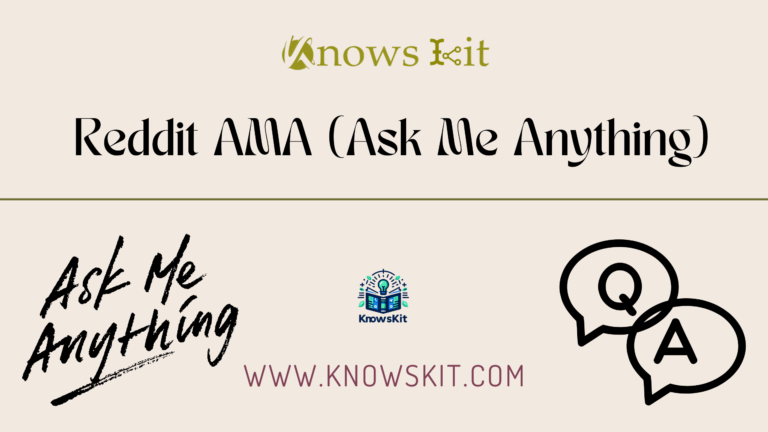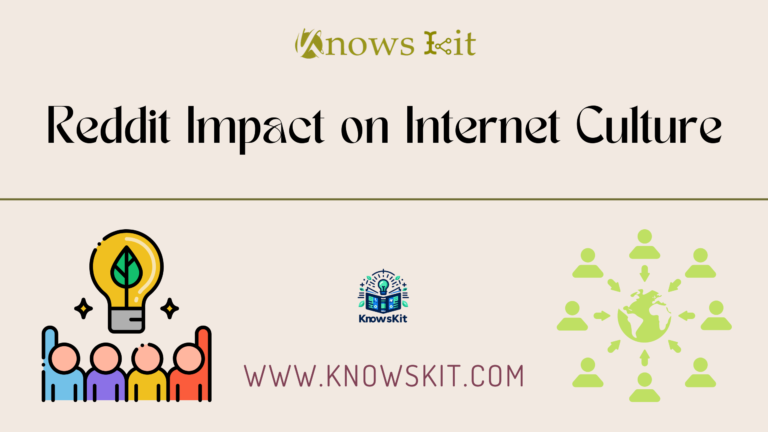Introduction to the Power of Social Media Leads
In today’s digital age, social media stands as a beacon of opportunity for businesses aiming to enhance their lead generation. The concept of ‘Social Media Leads‘ goes beyond mere likes and shares; it’s about cultivating meaningful relationships and converting online interactions into tangible business opportunities. In this comprehensive guide, we delve into the nuances of social media leads and reveal how you can leverage them to elevate your business.
Understanding the potential of social media to generate leads is crucial. A well-executed social media strategy can open doors to a wider audience, foster trust, and ultimately drive sales. Let’s embark on this journey to unlock the secrets of effective social media lead generation.
Understanding Social Media Leads
![Social Media Leads [2024 Exquisite Guide] 2 Social Media Leads : Comparison table of social media platforms for lead generation featuring Facebook, Instagram, LinkedIn, Twitter, and TikTok.](https://www.knowskit.com/wp-content/uploads/2024/01/choosing-the-right-platform-for-social-media-leads-1024x585.png)
Definition and Types of Social Media Leads
Social media leads are potential customers who show interest in your business through social media platforms. These leads can be categorized into:
Social Media Platform Comparison for Lead Generation
- Organic Leads: These are individuals who discover your business naturally, through your content, posts, or word-of-mouth.
- Paid Leads: Leads generated through paid advertisements on social media.
- Direct Message Leads: Potential customers who initiate contact with your business through direct messaging on platforms.
- Engagement Leads: Users who engage with your content through likes, comments, or shares, indicating potential interest.
| Platform | Best For | Key Features for Leads | Ideal Audience |
|---|---|---|---|
| Diverse Content & Ads | Detailed targeting options, Facebook Groups, Messenger | Broad, all ages | |
| Visual Storytelling & Engagement | High engagement with stories and posts, Shoppable tags | Young adults, lifestyle audiences | |
| Professional Networking & B2B Leads | Industry-specific content sharing, LinkedIn InMail, Professional groups | Professionals, B2B markets | |
| Real-time Engagement & Trends | Hashtag trends, Direct interaction with audience, Twitter Spaces | Young adults, tech-savvy users | |
| TikTok | Viral Content & Younger Demographics | Short-form video content, High shareability, Trending challenges | Gen Z, creative niches |
The Role of Different Social Media Platforms
![Social Media Leads [2024 Exquisite Guide] 3 Social Media Leads](https://www.knowskit.com/wp-content/uploads/2024/01/image-55-1024x664.png)
Each social media platform serves a unique role in lead generation:
- Facebook: Ideal for a broad audience, great for community building and targeted advertising.
- Instagram: Perfect for visual storytelling and brand aesthetics, attracting a younger demographic.
- LinkedIn: The go-to platform for B2B leads, professional networking, and industry content.
| Platform | Strengths | Ideal For |
|---|---|---|
| Broad Reach, Targeted Ads | Community Building, Diverse Content | |
| Visual Content, Stories | Brand Aesthetics, Younger Audience | |
| Professional Networking | B2B Leads, Industry Specific Content |
Building an Effective Social Media Presence
![Social Media Leads [2024 Exquisite Guide] 4 Table showing key metrics for tracking social media lead generation success including conversion rate, engagement rate, and CTR.](https://www.knowskit.com/wp-content/uploads/2024/01/metrics-to-measure-social-media-leads-1024x585.png)
Creating a robust presence on social media is more than just posting regularly. It’s about crafting a strategy that resonates with your audience and positions your brand effectively.
Creating Engaging Content
Engaging content is the cornerstone of a strong social media presence. Here’s how to make your content stand out:
- Relevance and Quality: Your content should address the needs and interests of your target audience. Use data and feedback to tailor your content.
- Variety and Creativity: Mix up your content types – videos, infographics, blog links, real-time posts. Keep it fresh and interesting.
- Storytelling: Share stories that connect on an emotional level. People remember stories far more than facts.
Examples of Engaging Posts:
- A tutorial video explaining a complex product feature in simple terms.
- An infographic comparing your product with general market standards.
- Real-time posts showing your team in action, humanizing your brand.
Consistency and Brand Voice
![Social Media Leads [2024 Exquisite Guide] 5 Social Media Leads](https://www.knowskit.com/wp-content/uploads/2024/01/image-56-1024x637.png)
Consistency in posting and maintaining a consistent brand voice are vital. They create a sense of familiarity and trust with your audience.
- Quote: “In social media, the ‘brand voice’ is the holy grail – it’s not just what you say, but how you say it,” – Jane Doe, Social Media Expert.
Leveraging Multimedia: Videos, Images, and Infographics
Multimedia elements are not just attention-grabbing; they can significantly enhance message retention.
- Videos: Ideal for demonstrations, stories, and testimonials.
- Images: High-quality, relevant images can increase engagement and understanding.
- Infographics: Great for presenting data or processes in an easily digestible format.
The effective use of these elements can lead to higher engagement rates and more social media leads.
Strategies for Generating Leads on Social Media
![Social Media Leads [2024 Exquisite Guide] 6 Illustration of diverse and engaging social media content for lead generation in digital marketing](https://www.knowskit.com/wp-content/uploads/2024/01/crafting-engaging-social-media-content-1024x585.png)
Mastering lead generation on social media involves a mix of creativity, strategy, and understanding of your audience’s behavior. Here are some effective strategies:
Utilizing Paid Advertising
Paid advertising on social media can significantly amplify your reach and target specific audience segments.
- Ad Formats: Choose from a variety of ad formats like carousel ads, video ads, and sponsored posts. Each format serves different purposes and audience engagements.
- Targeting and Retargeting: Use platform-specific targeting tools to reach your ideal audience based on demographics, interests, behaviors, and more. Retargeting campaigns can help you reconnect with users who have shown interest in your brand.
Interactive Features and Lead Magnets
![Social Media Leads [2024 Exquisite Guide] 7 Social Media Leads](https://www.knowskit.com/wp-content/uploads/2024/01/image-57-1024x644.png)
Interactive features like polls, quizzes, and contests can engage users and encourage them to share their contact information.
- Lead Magnets: Offer valuable resources like e-books, whitepapers, or webinars in exchange for contact details. These should provide value relevant to your audience’s interests or needs.
- Interactive Posts: Use interactive posts to engage users. For example, a quiz related to your industry can be both engaging and informative.
Networking and Community Building
Building a community around your brand can turn followers into leads.
- Engagement: Respond to comments, messages, and mentions. Engage with your audience’s content as well. This builds a relationship and trust.
- Groups and Forums: Participate in or create groups and forums related to your industry. This can help position you as a thought leader and go-to source.
Influencer Collaborations: Pros and Cons
Collaborating with influencers can expand your reach, but it’s essential to choose influencers aligned with your brand values.
- Pros: Access to the influencer’s audience, enhanced brand credibility, and content variety.
- Cons: Can be costly, risk of mismatched audience expectations, and potential for mixed brand messages.
Capturing and Managing Social Media Leads
![Social Media Leads [2024 Exquisite Guide] 8 Various Call-To-Action strategies in social media posts for effective lead generation.](https://www.knowskit.com/wp-content/uploads/2024/01/call-to-action-your-gateway-to-leads-1024x585.png)
Once you have engaged users on social media, the next step is to convert them into leads and effectively manage them. Here’s how to do it:
Effective Use of Call-To-Action (CTA)
A well-crafted CTA can significantly impact your lead-generation efforts.
- Strategic Placement: Position CTAs in your posts, stories, and profile bio. Ensure they are visible and compelling.
- Clear and Action-Oriented: Use direct language like “Sign up now,” “Learn more,” or “Get your free trial.”
- Examples of Strong CTAs:
- In a post: “Swipe up to join our exclusive webinar!”
- In a bio: “Click the link to download our free guide!”
Lead Capture Forms and Landing Pages
Once a user shows interest, direct them to a landing page or a form where they can provide their information.
- Simplicity and Clarity: Ensure that the form is easy to fill out and doesn’t ask for unnecessary information.
- Mobile Optimization: With the majority of social media traffic coming from mobile devices, ensure your forms and landing pages are mobile-friendly.
CRM Integration and Lead Tracking
Integrating Customer Relationship Management (CRM) tools can streamline the process of managing leads.
- Automation: Automate the process of capturing leads from social media and feeding them into your CRM system.
- Tracking and Segmentation: Track where leads come from and segment them based on their interests, behaviors, and engagement levels.
| CRM Tool | Характеристики | Best For |
|---|---|---|
| Salesforce | Comprehensive lead management, analytics | Large-scale businesses |
| HubSpot | User-friendly, marketing automation | Small to medium businesses |
| Zoho CRM | Customizable, integrated suite | Businesses seeking flexibility |
Effective lead management is crucial for nurturing these potential customers through the sales funnel. With these strategies, you can ensure that your social media efforts translate into valuable business leads.
Analyzing and Improving Lead Quality
![Social Media Leads [2024 Exquisite Guide] 9 Social Media Leads](https://www.knowskit.com/wp-content/uploads/2024/01/image-58-1024x669.png)
To ensure your social media lead generation efforts are successful, it’s crucial to analyze and refine your approach continuously. Here’s how you can improve the quality of your leads:
Metrics to Track Lead Generation Success
Key Metrics for Tracking Social Media Lead Generation Success
| Metric | Importance | How to Measure |
|---|---|---|
| Lead Conversion Rate | Measures the effectiveness of your lead generation strategy in converting leads to customers. | Number of conversions / Number of leads x 100 |
| Engagement Rate | Indicates how well your audience interacts with your content. | Total interactions / Total followers x 100 |
| Click-Through Rate (CTR) | Reflects the effectiveness of your CTA and content in driving traffic to your site. | Number of clicks / Number of impressions x 100 |
| Cost Per Lead (CPL) | Helps in budgeting and understanding the cost-effectiveness of your campaigns. | Total spent on campaign / Number of leads generated |
| Audience Growth Rate | Tracks how quickly you’re gaining new followers, indicating brand reach and appeal. | New followers over a period / Total followers x 100 |
Tracking the right metrics is key to understanding the effectiveness of your strategies.
- Lead Volume: The number of leads generated. A higher volume might indicate effective reach.
- Conversion Rate: The percentage of leads that take the desired action. This reflects the quality of your leads.
- Engagement Rate: Measures how interactively engaged your audience is with your content.
Graphs Showing Key Performance Indicators:
- A graph comparing monthly lead volumes.
- A conversion rate graph over different campaigns.
A/B Testing for Social Media Campaigns
A/B testing allows you to compare different strategies to see what works best.
- Test Different Elements: Experiment with different CTAs, post types, content formats, or posting times.
- Analyze Results: Use analytics to determine which version performs better in terms of engagement and lead generation.
Responding to Lead Feedback and Behaviors
Adapting your strategy based on lead feedback and behavior can significantly improve lead quality.
- Feedback Channels: Encourage feedback through comments, direct messages, or surveys.
- Behavior Analysis: Monitor how leads interact with your content and website. Look for patterns like what content drives more engagement or leads to website visits.
By constantly analyzing these aspects and refining your approach, you can enhance the quality of your social media leads, ensuring they are more likely to convert into customers.
Overcoming Challenges in Social Media Lead Generation
![Social Media Leads [2024 Exquisite Guide] 10 Graphical representation of lead generation success in social media with key metrics analysis.](https://www.knowskit.com/wp-content/uploads/2024/01/analyzing-social-media-lead-generation-1024x585.png)
Successfully navigating the complexities of social media lead generation requires understanding and addressing various challenges. Let’s explore common obstacles and strategies to overcome them:
Addressing Common Obstacles
- Saturation and Competition: Social media platforms are crowded, making it hard to stand out.
- Strategy: Focus on creating unique, high-quality content that resonates with your niche audience.
- Changing Algorithms: Social media algorithms change frequently, affecting content visibility.
- Strategy: Keep updated with platform changes, diversify your presence across different platforms, and engage actively with your audience to boost organic reach.
- Lead Quality vs. Quantity: Generating a large number of leads doesn’t always translate to quality.
- Strategy: Refine targeting criteria, create more personalized content, and implement robust lead qualification processes.
Adapting to Platform Algorithm Changes
Staying ahead in the ever-evolving social media landscape is crucial:
- Stay Informed: Regularly follow updates from social media platforms and industry experts.
- Flexibility: Be ready to adapt your content and strategy to align with new algorithm changes.
- Diversify Your Approach: Don’t rely on a single platform or type of content. A diverse strategy can mitigate risks associated with algorithm changes.
Interview with a Social Media Manager about Challenges
“The key to overcoming challenges in social media marketing lies in continuous learning and adaptability. It’s about understanding your audience deeply and being agile enough to change strategies when needed,” says Alex Johnson, a seasoned Social Media Manager.
By recognizing these challenges and adopting proactive strategies, businesses can enhance their social media lead generation effectiveness and maintain a competitive edge.
Future Trends in Social Media Leads
![Social Media Leads [2024 Exquisite Guide] 11 Visualization of emerging trends in social media lead generation including AI and personalization.](https://www.knowskit.com/wp-content/uploads/2024/01/emerging-trends-in-social-media-leads-1024x585.png)
Staying ahead in social media lead generation not only involves current strategies but also anticipating future trends. Let’s explore what the future might hold for social media leads:
Emerging Platforms and Technologies
The social media landscape continuously evolves, with new platforms and technologies emerging regularly.
- New Platforms: Platforms like TikTok have risen rapidly in popularity, opening new avenues for lead generation.
- Technological Advancements: Technologies like AR (Augmented Reality) and VR (Virtual Reality) are beginning to play a role in social media, offering innovative ways to engage audiences.
The Role of AI and Automation in Lead Generation
Artificial Intelligence (AI) and automation are increasingly important in streamlining and enhancing lead-generation efforts.
- Chatbots: AI-driven chatbots can engage users, answer queries, and even qualify leads on social media platforms.
- Predictive Analytics: AI can analyze data to predict trends and user behaviors, helping to target content and ads more effectively.
Predictions for Social Media Marketing
Looking ahead, several trends seem set to shape the future of social media marketing:
- Personalization: As data analytics becomes more sophisticated, expect to see more personalized and targeted content.
- Video Content: The popularity of video content is likely to continue growing, with a focus on short-form videos.
- User Privacy and Data Security: With increasing concerns about data privacy, platforms might introduce new regulations impacting how businesses collect and use data.
Embracing these trends and staying adaptable will be key to leveraging social media for lead generation in the future.
ЧАСТО ЗАДАВАЕМЫЕ ВОПРОСЫ
How Do I Convert Social Media Followers into Leads?
Engage Actively: Regularly interact with followers through comments, messages, and posts.
Exclusive Offers: Provide special deals or content exclusively for your social media followers.
Lead Magnets: Use downloadable resources, webinars, or free trials as incentives.
CTAs: Include clear Call-To-Actions in your posts directing followers to sign up or learn more.
What’s the Best Time to Post on Social Media for Maximum Lead Generation?
Audience Analysis: Understand when your audience is most active. This varies per platform and target demographic.
Testing: Experiment with posting at different times and measure engagement.
Consistency: Post regularly when your audience engagement is highest.
Can User-Generated Content Help in Generating Leads on Social Media?
Trust Building: User-generated content can build trust and authenticity.
Engagement Boost: Encourages more interaction from your audience.
Content Variety: Adds diversity to your content strategy.
How Important are Hashtags in Social Media Lead Generation?
Visibility Increase: Hashtags can significantly increase the visibility of your posts.
Targeted Reach: Use relevant and targeted hashtags to reach potential leads.
Trending Topics: Participating in trending topics can increase exposure.
What Are Some Effective Ways to Use Instagram for Lead Generation?
Instagram Stories: Use for time-sensitive offers and direct engagement.
Shoppable Posts: Utilize for direct product marketing and sales.
Influencer Collaborations: Partner with influencers to tap into their follower base.
Instagram Ads: Targeted ads can directly reach potential leads.
Is LinkedIn Effective for B2B Social Media Lead Generation?
Professional Networking: LinkedIn is ideal for B2B networking and leads.
Content Sharing: Share industry-relevant content to establish authority.
LinkedIn Groups: Participate in or create groups for targeted engagement.
What Metrics Should I Track to Analyze Social Media Lead Generation Success?
Lead Conversion Rate: Measures how many leads are converted into customers.
Click-Through Rate (CTR): Tracks how often people click on the links in your posts.
Engagement Rate: Analyzes likes, shares, and comments to gauge content effectiveness.
How Can Small Businesses Leverage Social Media for Lead Generation Without a Big Budget?
Organic Engagement: Focus on building relationships and engaging organically with your audience.
Local Targeting: Use local hashtags and content relevant to your community.
Collaborations: Partner with other local businesses or influencers.
What Role Does Content Quality Play in Social Media Lead Generation?
Audience Retention: High-quality content keeps the audience interested and engaged.
Brand Reputation: Reflects professionalism and credibility.
Shareability: Quality content is more likely to be shared, increasing reach.
How to Use Facebook for Effective Lead Generation?
Facebook Ads: Utilize targeted ads with strong CTAs.
Facebook Groups: Engage with potential leads in niche groups.
Events and Live Sessions: Host live events or Q&A sessions for direct engagement.
Conclusion: Maximizing the Potential of Social Media Leads
In conclusion, harnessing the power of social media leads is a dynamic and multifaceted process that requires strategic planning, adaptability, and a deep understanding of your audience. From creating engaging content to leveraging the latest technologies and trends, the potential to grow your business through social media is immense. Remember, the key is not just to generate leads but to cultivate them into lasting customer relationships.
As social media continues to evolve, so should your strategies. Stay informed, be creative, and most importantly, maintain a genuine connection with your audience. By doing so, you can transform your social media channels into a powerful engine for business growth and customer engagement.
More Reference:-
https://www.nature.com/articles/srep04213
https://www.degruyter.com/document/doi/10.1515/jcc-2013-0003/html

![Social Media Leads [2024 Exquisite Guide] 1 Visualization of emerging trends in social media lead generation including AI and personalization.](https://www.knowskit.com/wp-content/uploads/2024/01/emerging-trends-in-social-media-leads.png)


![Social Media Audit [2024 Exquisite Guide] 24 Social Media Audit [2024 Exquisite Guide]](https://www.knowskit.com/wp-content/uploads/2024/01/social-media-audit-checklist-768x439.png)
![Mastering Social Media Advertising: Strategies for Success[2024 Exquisite Guide] 25 Освоение рекламы в социальных сетях: Стратегии успеха[2024 Изысканное руководство]](https://www.knowskit.com/wp-content/uploads/2024/01/the-dynamic-world-of-social-media-ads-768x439.png)

